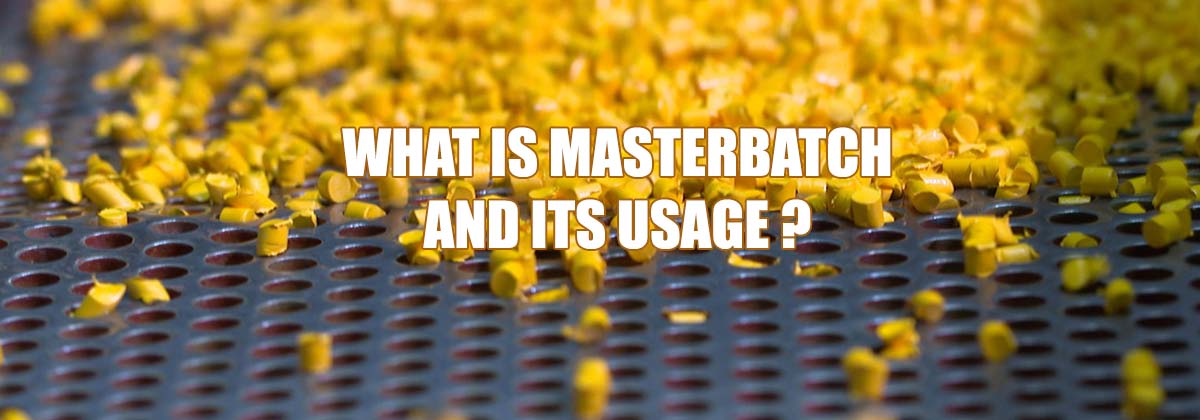In a short way, Masterbatch is a solid plastic additive used to color or impart other properties to plastics.
A concentrated mixture obtained by the distribution of colours and additives into a polymer carrier by heat treatment and in-particularly a high shear mixing extruder is called masterbatch. The mixture is then cooled, cut and formed into granules via a pelletiser.
Masterbatch allows the processor to colour raw polymer economically during the plastics manufacturing process.
A color masterbatch, or color concentrate, is a granule used for coloring thermoplastics. It consists of one or more colorants and a polymer-specific carrier resin. The composition of a color masterbatch is called its recipe.
Masterbatches are highly concentrated with high \”let down ratios\”, one tonne of a natural polymer can fit into a 25 kg bag.
Masterbatches dilute nature, allowing higher accuracy in dosing of expensive components.
Masterbatches solid crystals are solvent free and tend to have a longer shelf life as the solvent in the polymer won’t evaporate. They generally contain 40-65 per cent additives, but the range can be altered from 15-80 per cent in a few additional cases.
Some of the most valuable benefits of masterbatch
Other Benefits of Masterbatch
– Easier incorporation of additives:
Masterbatches allow for less complex addition by pellet-to-pellet mixing or adding in the extruder. A special dosing device is not required for the smallest dust quantities. It also reduces the accuracy of the addition required to achieve the same addition rate in the final product.
– Improved Product Consistency and Process Stability:
The use of an additive masterbatch also improves product consistency and process stability through better dispersion.
– Safer Handling of Hazardous Materials:
Many additives are hazardous or degrading substances in their pure form. Masterbatches encapsulate the additive in a polymer resin or a liquid. This encapsulation reduces or in many cases eliminates the additive’s dangerousness. It also eliminates the numerous potential hazards of handling powders. These features result in fewer technical controls and less personal protective equipment (PPE) requirements.
– Cleaner Production:
In addition to being safer to handle, masterbatch additives are also cleaner. There is no color pigment or other powdered additive to waft, spill or statically attach to surfaces. The result is a cleaner production area, reduced cross-contamination, and potentially quicker transitions between different products.
– Increased Additive Stability and Shelf-Life:
The masterbatch can help protect the additive from exposure to humidity, temperature and UV during storage.
– Easier Incorporation of Antimicrobial Technology:
Research shows us that antimicrobial technology incorporation is as simple as possible for our customers, taking advantage of the extensive benefits of masterbatches concentrates.


